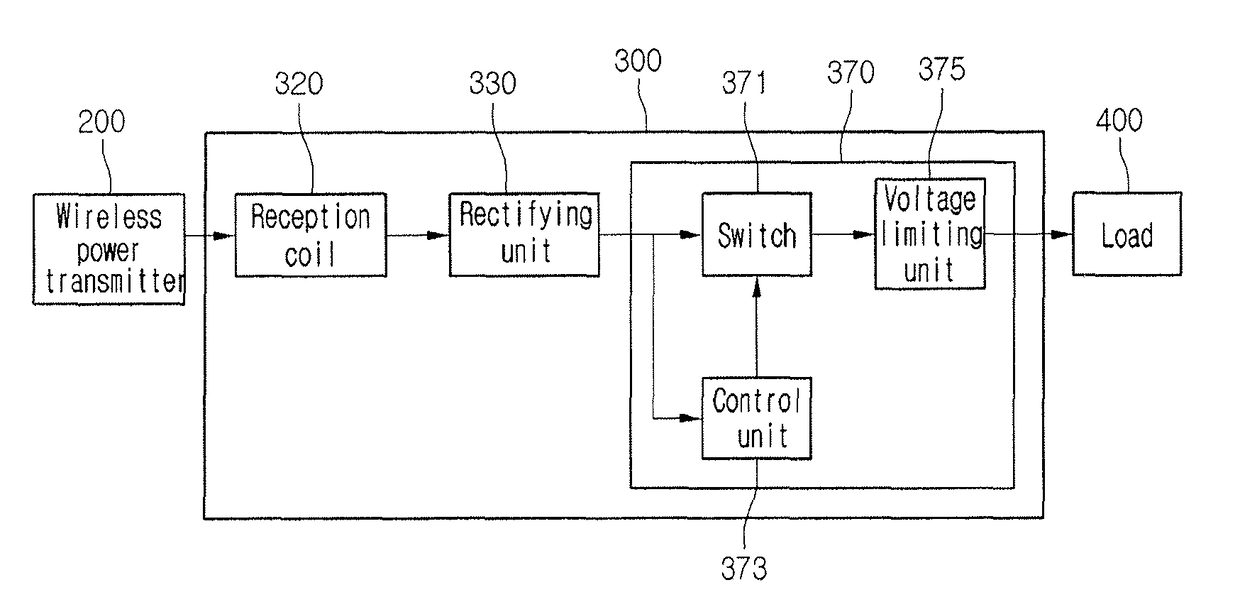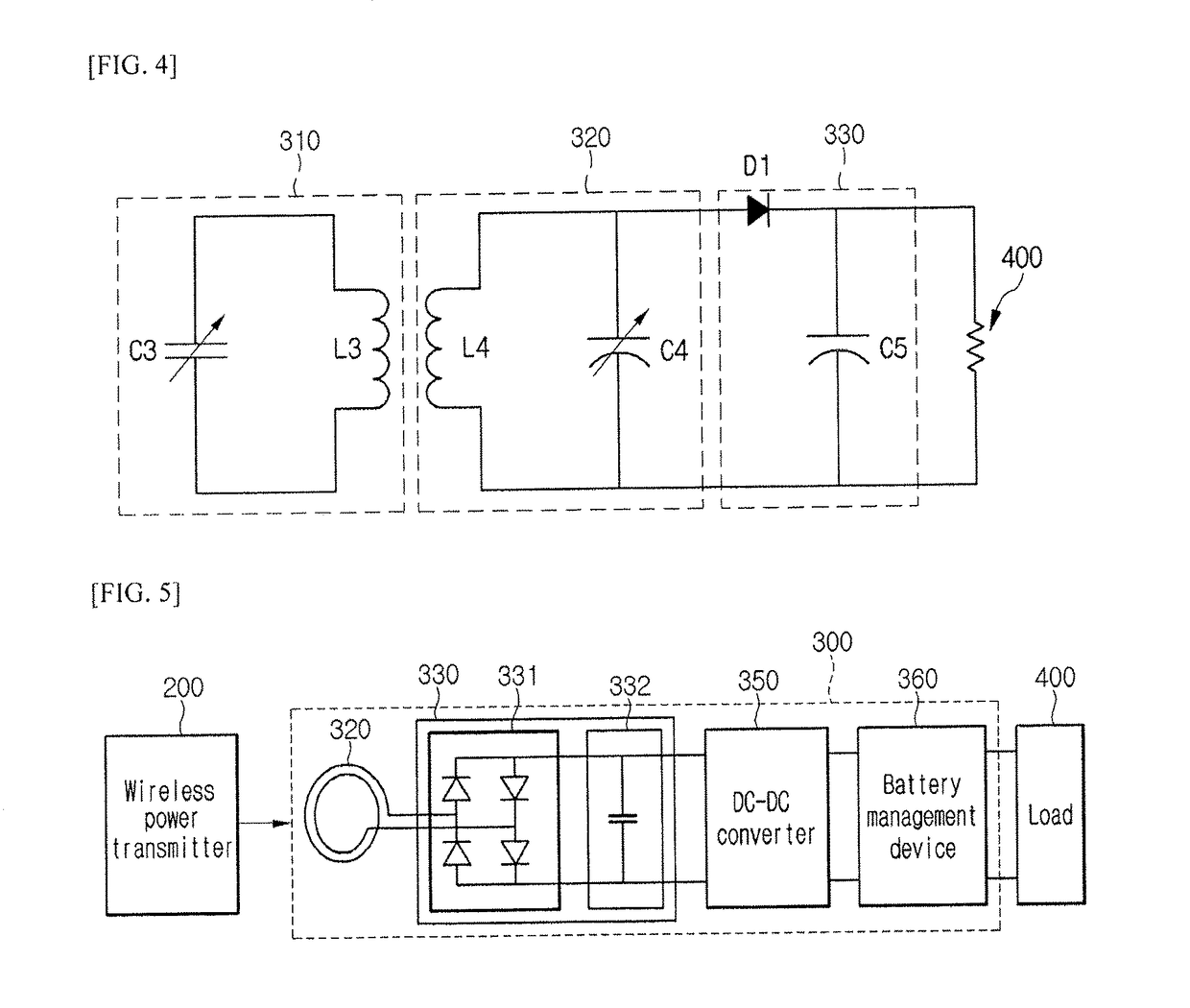Wireless power receiver and power control method thereof
a power receiver and wireless technology, applied in the direction of electrochemical generators, secondary cell servicing/maintenance, transportation and packaging, etc., can solve the problems of unstable battery charge state and short power transmission distan
- Summary
- Abstract
- Description
- Claims
- Application Information
AI Technical Summary
Benefits of technology
Problems solved by technology
Method used
Image
Examples
second embodiment
[0080]FIG. 5 is a block diagram showing a wireless power receiver 300 according to a
[0081]Referring to FIG. 5, the wireless power receiver 300 may include the reception induction coil 320, the rectifying unit 330, the DC-DC converter 350, and a battery management IC (BMIC) 360. According to the embodiment, if the wireless power receiver 300 receives power from the wireless power transmitter 200 through the resonance, the wireless power receiver 300 may further include the reception resonant coil 310. According to the embodiment, if the wireless power receiver 300 receives power from the wireless power transmitter 200 through the electromagnetic induction, the wireless power receiver 300 may not include the reception resonant coil 310.
[0082]The reception induction coil 320 receives power from the wireless power transmitter 200. The power received in the reception induction coil 320 may be AC power.
[0083]The rectifying unit 330 may convert the AC power received in the reception induct...
first embodiment
[0099]FIG. 6 is a flowchart illustrating a power control method of a wireless power receiver 300 according to a
[0100]Details of the wireless power receiver 300 are equal to those shown in FIG. 5.
[0101]It is assumed in the following description that the load 400 is a battery embedded in an electronic appliance such as a portable phone or a laptop computer.
[0102]Referring to FIG. 6, first, in step S101, the BMIC 360 determines whether the load 400 operates in a non-charging mode. The non-charging mode may signify that power is not supplied to the load 400. To the contrary, a charging mode may signify that power having a predetermined level or more is continuously supplied to the load 400.
[0103]In step S103, if the BMIC 360 confirms that the load 400 is in the non-changing mode, the BMIC 400, the BMIC 360 applies a voltage equal to or higher than a threshold voltage to the load 400. According to an embodiment, the threshold voltage may refer to the minimum voltage required to allow the...
third embodiment
[0113]FIG. 7 is a block diagram showing a wireless power receiver 300 according to a
[0114]Referring to FIG. 7, the wireless power receiver 300 may include a reception induction coil 320, a rectifying unit 330 and a charging management unit 370.
[0115]In addition, although not shown in FIG. 7, the wireless power receiver 300 may further include a DC-DC converter 350 shown in FIG. 5.
[0116]In addition, although not shown in FIG. 7, the wireless power receiver 300 may further include a battery management device (BMIC) 360 shown in FIG. 5.
[0117]The BMIC 360 may control the DC power in order to charge the load 400 with a constant DC current.
[0118]The BMIC 360 may be included in the load 400. Hereinafter, it is assumed in the description that the BMIC 360 is included in the load 400.
[0119]According to the embodiment, if the wireless power receiver 300 receives power from the wireless power transmitter 200 through the resonance, the wireless power receiver 300 may further include a reception...
PUM
| Property | Measurement | Unit |
|---|---|---|
| threshold voltage | aaaaa | aaaaa |
| time | aaaaa | aaaaa |
| power | aaaaa | aaaaa |
Abstract
Description
Claims
Application Information
 Login to View More
Login to View More - R&D
- Intellectual Property
- Life Sciences
- Materials
- Tech Scout
- Unparalleled Data Quality
- Higher Quality Content
- 60% Fewer Hallucinations
Browse by: Latest US Patents, China's latest patents, Technical Efficacy Thesaurus, Application Domain, Technology Topic, Popular Technical Reports.
© 2025 PatSnap. All rights reserved.Legal|Privacy policy|Modern Slavery Act Transparency Statement|Sitemap|About US| Contact US: help@patsnap.com



